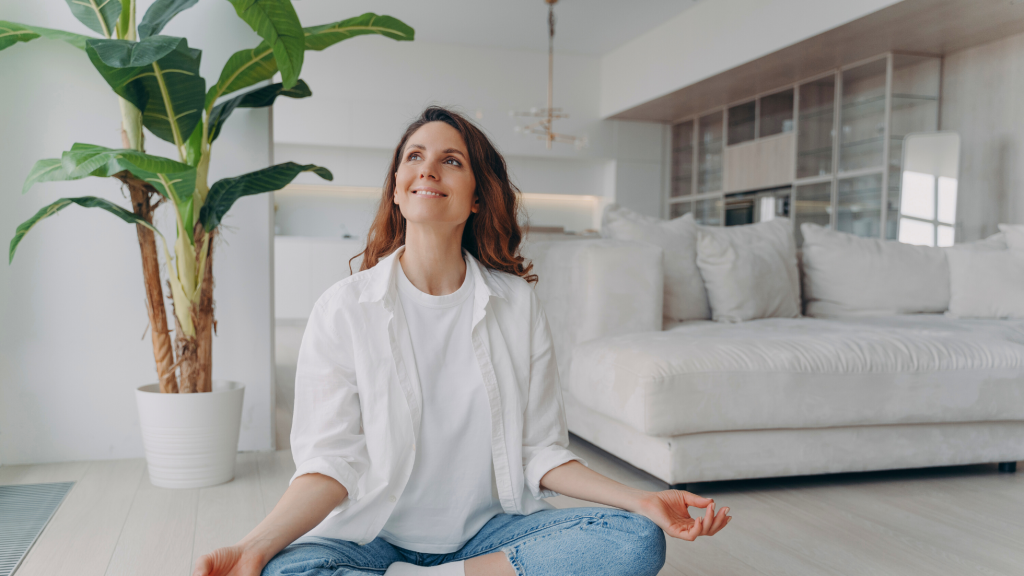How Mindful Consumption Can Transform Your Minimalist Space

Transforming Your Space Through Mindful Consumption
In today’s hyper-connected society, where consumerism often reigns supreme, the challenge lies in distinguishing between what we need and what we are merely tempted to acquire. Adopting a mindset of mindful consumption is an essential strategy for not only decluttering our physical spaces but also for nurturing our mental well-being. This approach encourages individuals to become more intentional about their purchasing decisions, ultimately allowing for a more curated and inspiring living environment.
So, what exactly does mindful consumption entail? At its core, it emphasizes making thoughtful choices regarding the items we allow into our homes. Here are some fundamental principles:
- Quality over quantity: This principle reminds us to prioritize acquiring items that are designed well, durable, and genuinely serve a purpose in our lives. For example, instead of buying several cheap kitchen gadgets that end up collecting dust, consider investing in a high-quality chef’s knife that will enhance your cooking experience for years to come.
- Sustainable choices: In an era where climate change poses a significant threat, opting for eco-friendly products is more crucial than ever. Choosing items made from sustainable materials, such as bamboo utensils or reusable bags, not only reduces waste but also helps create a healthier planet. Brands like Patagonia or Seventh Generation exemplify this commitment to sustainability, offering products that merge functionality with a low environmental impact.
- Emotional connection: Choosing items that evoke fond memories or bring joy can substantially affect the atmosphere of a space. Instead of filling your home with generic decor, opt for pieces with personal significance—like a family heirloom, artwork from a local artist, or souvenirs from travels that remind you of cherished experiences. These connections play a vital role in transforming a mere house into a home.
By incorporating these principles, you can significantly reduce physical clutter and, consequently, alleviate mental stress. For instance, a thoughtfully chosen piece of furniture can not only serve a functional purpose, such as a well-designed coffee table but also act as a focal point that adds character and comfort to your living space. As we begin to redefine our environments aligned with our values, the impact of mindful consumption becomes both significant and transformative.
As we progress in this exploration, we will delve into practical strategies to weave mindful consumption into your minimalist lifestyle. You’ll learn how intentional choices can cultivate a harmonious, functional, and aesthetically pleasing environment that authentically mirrors your identity. Join us on this journey of discovery and empowerment, where every decision leads to a more meaningful way of living.
DISCOVER MORE: Click here to learn about the significance of intention in minimalist design

Principles of Mindful Consumption in Minimalist Living
To effectively employ mindful consumption as a means of enhancing your minimalist space, it is essential to understand how the principles of this approach not only promote intentionality but also foster a deeper connection with your environment. By focusing on the elements that bring true value to your life, the transformation becomes both holistic and impactful.
1. Enhance Your Space with Intentional Purchases
When you adopt the practice of mindful consumption, each purchase transforms into a deliberate choice rather than an impulse buy. This means considering whether an item will truly enhance your living experience, or if it may lead to additional clutter. For example, before purchasing a new decorative item, ask yourself: does it serve a purpose, or does it merely fill a space? This level of scrutiny fosters a curated environment where each piece contributes to your overall aesthetic and emotional well-being.
2. The Role of Functionality in Minimalist Design
In a minimalist space, functionality reigns supreme. Every item should serve a dual purpose: function and form. Think of versatile furniture options, such as a sleek ottoman that provides extra seating while offering storage solutions. This concept encourages you to look for multi-functional items that effortlessly blend style and utility. Mindful consumption advocates not just for reduction in quantity but also for maximization of value in every object within your home.
3. Understanding the True Cost of Items
Engaging in mindful consumption also requires a thorough understanding of the true cost of items—financially, socially, and environmentally. When considering a purchase, reflect on the following:
- Financial implications: Is this item worth the price, or am I being swayed by marketing tactics?
- Social responsibility: Is this product ethically made? Does the brand’s ethos align with my values?
- Environmental impact: What materials were used? Is this item sustainable, or will it end up in a landfill?
By contemplating these factors, you guide your spending habits toward brands that prioritize ethical practices, which not only benefits you but also contributes to the greater good.
4. Creating a Narrative with Meaningful Items
A minimalist space thrives on the emotional connection between its inhabitants and their belongings. Items that tell a story or hold special significance can evoke feelings of nostalgia and joy, enhancing the overall ambiance of your home. Perhaps it’s a hand-carved sculpture from a cherished vacation or a framed photograph capturing a special moment. Mindful consumption promotes the curation of belongings that enrich your life rather than diminish it.
In an age of disposability, shifting towards a mindset of mindful consumption can significantly change not just our physical environments but our mental states as well. By embracing quality, functionality, and personal connection, you can effectively cultivate a minimalist space where every element resonates with purpose and intention. As we continue exploring this transformative journey, we will uncover additional tactics that will further refine your approach to mindful consumption.
Understanding Mindful Consumption
Mindful consumption is not merely about purchasing less; it’s about making intentional choices that resonate with your values and lifestyle. When integrated into a minimalist space, it fosters a harmonious environment that reflects clarity and purpose. By prioritizing quality over quantity, individuals can create living spaces that not only look good but also serve their needs effectively. As we delve deeper into this concept, it becomes evident that mindful consumption aligns perfectly with the principles of minimalism. It encourages a deeper awareness of our purchasing habits—fostering an attitude of gratitude for what we own rather than a constant yearning for more. This can transform an overwhelming array of belongings into a curated collection of essential items that spark joy and functionality.The impact of transforming your space through mindful consumption extends beyond aesthetics. It can lead to significant emotional and psychological benefits, such as reduced anxiety and increased satisfaction. By surrounding ourselves with items that truly serve us, we create inviting spaces that promote relaxation, focus, and creativity. As you embark on your mindful consumption journey, consider adopting a few practical techniques. First, evaluate your current possessions with a discerning eye—identify which items genuinely contribute to your happiness and functionality. Second, when making new purchases, ask yourself if the item aligns with your values and how it fits into your minimalist lifestyle. Finally, be prepared to let go of items that no longer serve their purpose, creating room for positivity and growth within your environment.Incorporating these practices into your daily life can lead to a transformative experience, allowing your minimalist space to evolve into a sanctuary where you can thrive. Embrace the journey of mindful consumption and witness how it revolutionizes the way you interact with your surroundings, enhancing your overall wellbeing.
| Category | Benefits |
|---|---|
| Intentional Purchasing | Focuses on quality and necessity, minimizing waste. |
| Emotional Wellbeing | Reduces anxiety by fostering a clutter-free environment. |
These advantages of mindful consumption pave the way towards an enriched minimalist lifestyle, encouraging a sense of fulfillment and tranquility in your personal space. Embracing these insights invites you to further explore the potential that lies in a thoughtfully curated environment.
DISCOVER MORE: Click here to uncover the benefits of intentional living
Embracing Mindful Consumption for Lasting Impact
The journey toward a minimalist lifestyle becomes even more profound when mindful consumption is embraced as a guiding principle. This approach not only selects quality items but also encourages thoughtful reflection on how possessions impact both space and psyche. In a world often characterized by consumerism, the effort to be more conscious about what we bring into our homes can lead to transformative changes.
5. The Significance of Design Aesthetics
A key aspect of mindful consumption lies in the aesthetics of design. Minimalist spaces thrive on simplicity and coherence, and this aesthetic principle is anchored in an understanding of how color, shape, and texture interact in the environment. When making purchases, consider how each element fits into an overall design narrative. For example, a carefully selected color palette can create harmony, making a space feel expansive and inviting. Look for items that complement your existing decor and contribute positively to the atmosphere you aim to cultivate.
6. Decluttering: A Mindful Process
Mindful consumption doesn’t merely involve selective purchasing; it also necessitates a candid approach to decluttering. Each item retained or discarded should be scrutinized through the lens of value added to your life. Implement a system for decluttering that encourages regular evaluation of your belongings. For instance, the “one in, one out” method is a practical rule: every time you acquire something new, commit to removing an existing item. This practice not only keeps your space tidy but continually reinforces the importance of conscious decision-making.
7. Supporting Local and Sustainable Brands
Another prominent feature of mindful consumption in minimalist living is the commitment to support local and sustainable brands. Purchasing from small businesses or artisans not only reduces environmental impact but often results in more unique and durable products. Research shows that consumers who prioritize local products contribute to the economic health of their communities while gaining access to better-quality items. By favoring sustainable options, such as items made from reclaimed or upcycled materials, you align your consumption habits with a greater ecological ethos, reducing waste and promoting sustainability.
8. Mindfulness in the Face of Technology
With the rise of online shopping, consumers face a paradox: convenience can lead to impulsivity. To navigate this, integrate mindfulness into your digital shopping habits. Before clicking “buy,” pause and reflect. Does this item serve a meaningful purpose in your home? Can you find it locally? Utilizing apps that track your spending and promote conscious choices can be beneficial in maintaining this awareness. Set personal limits on purchases and curate online wish lists rather than immediate buy buttons, allowing for reflection and reducing unthoughtful acquisition.
9. Engaging in a Zero-Waste Mindset
A crucial component of mindful consumption is adopting a zero-waste mindset. This approach emphasizes the reduction of waste in all aspects of consumption—from packaging to product lifespan. Opt for items that come with minimal or recyclable packaging, and invest in quality pieces that will stand the test of time, thereby reducing the cycle of alternate purchases. Consider incorporating practices like composting and repurposing as a means to further embody a zero-waste lifestyle. This conscious effort not only enhances your minimalist space but aligns with a larger movement toward sustainability.
By integrating these practices into your life, you can wear the badge of mindful consumerism with pride. The cumulative effect of small, intentional actions fosters a living space that embodies serenity, purpose, and connection to the world around you. As we delve deeper into the benefits of mindful consumption, we continue to discover ways to infuse life, presence, and meaning into minimalist design.
DIVE DEEPER: Click here to discover transformative strategies
Concluding Thoughts on Mindful Consumption and Minimalist Spaces
In the pursuit of a minimalist lifestyle, the integration of mindful consumption emerges as a transformative force. As we have explored, the essence of mindful consumption transcends simple purchasing; it fosters a mindful relationship with our belongings and our environment. By focusing on quality over quantity, we curate spaces that not only reflect our aesthetic preferences but also serve a deeper, more significant purpose in our lives.
Implementing practices such as conscious decluttering and embracing a zero-waste mindset contributes to a holistic approach where each item is intentionally chosen and adds value to our space. This practice leads to an atmosphere of tranquility and simplicity, creating a sanctuary away from the chaos of consumer culture. Furthermore, supporting local and sustainable brands enhances community ties and minimizes environmental impact, aligning personal choices with a broader ethical standpoint.
As technology becomes increasingly entwined with our shopping habits, adopting a strategy of digital mindfulness further safeguards our commitment to intentional living. The ability to pause, reflect, and prioritize meaning over impulse can revolutionize our consumption patterns. In a world where excess often overwhelms, being mindful empowers us to reclaim our spaces and our minds.
Ultimately, the transformation of your minimalist space through mindful consumption is not just a trend; it is a lifestyle choice that promotes sustainability, well-being, and a profound connection to the world around us. By embracing these principles, you cultivate a home that is not only aesthetically pleasing but also rich in purpose, contributing to a more fulfilling and sustainable existence.


